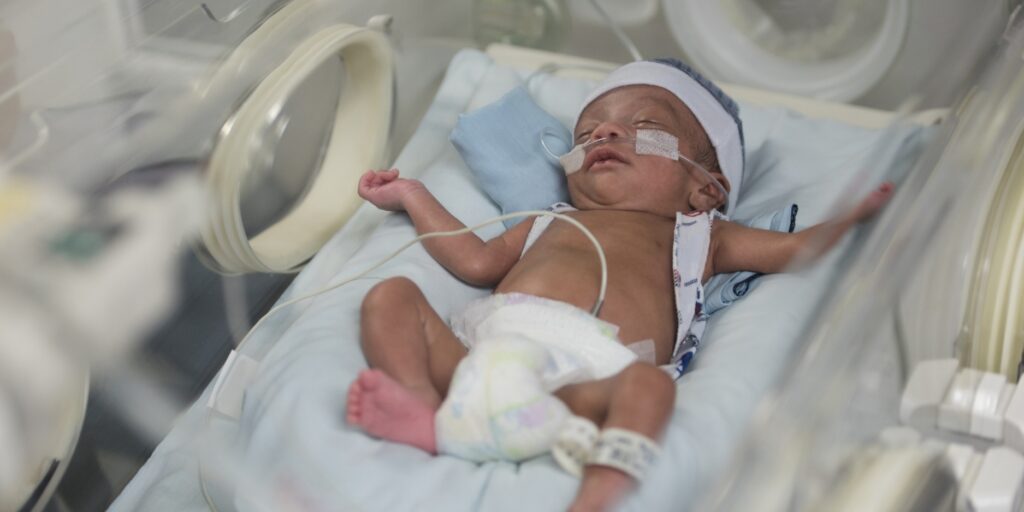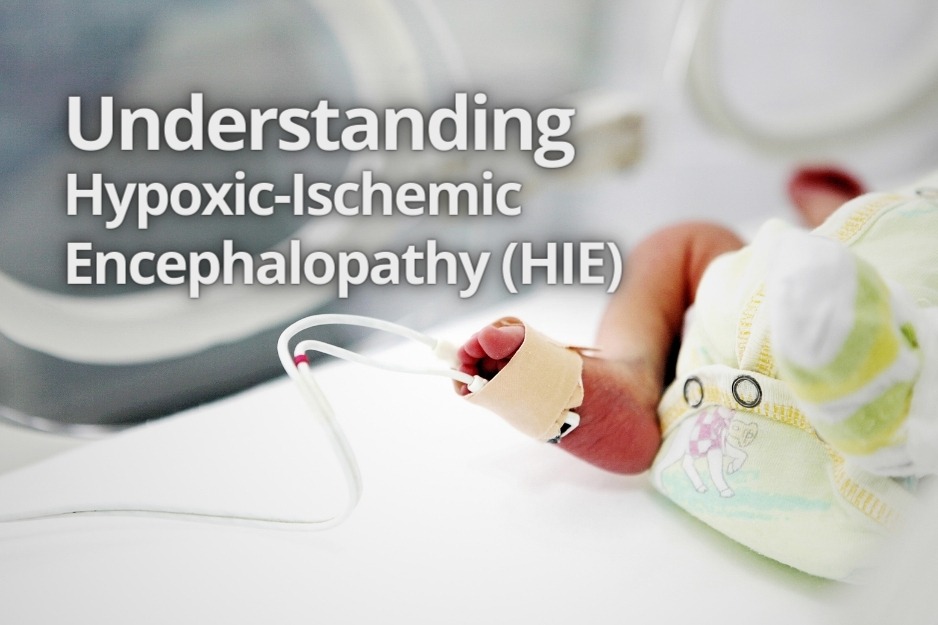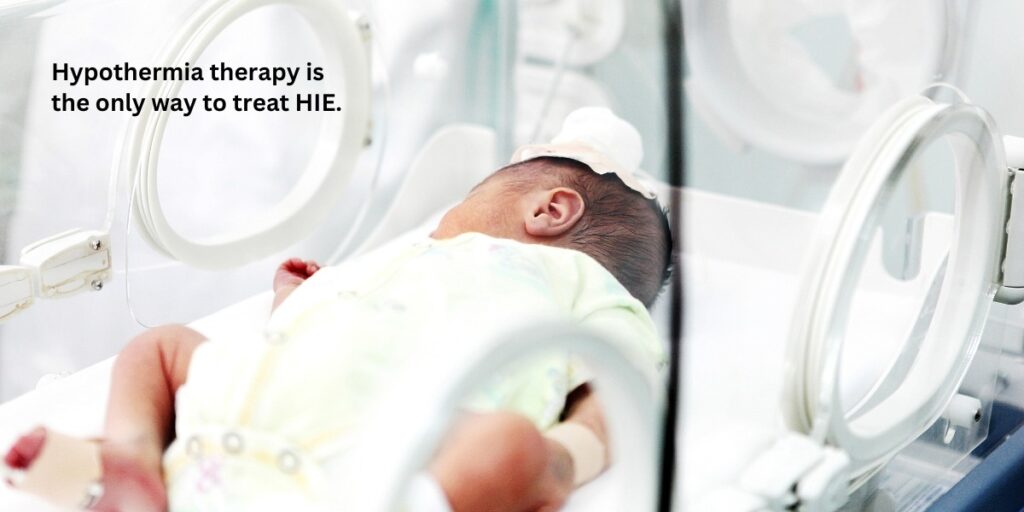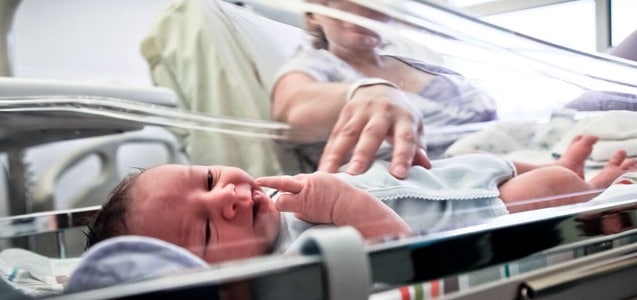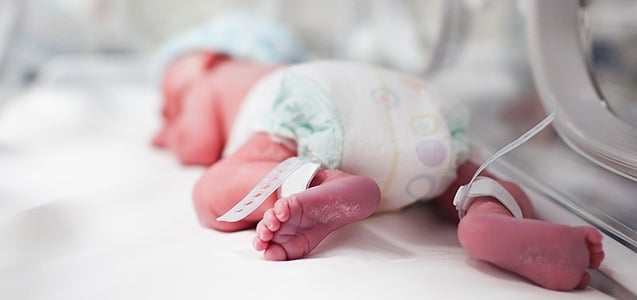Birth injuries caused by a lack of oxygen during labor and delivery can be devastating, with lifelong consequences for both infants and their families. A nuchal cord birth injury can cause newborn HIE.
Hypoxic ischemic encephalopathy (HIE) stands as one of the most serious conditions, often resulting from preventable complications during delivery. One such example is failing to timely diagnose and treat a nuchal cord injury.
What Is a Nuchal Cord?
A nuchal cord occurs when the umbilical cord wraps around the fetal neck during pregnancy or delivery. While many nuchal cords are loose and cause no complications, tight or multiple loops can lead to significant injury during labor and delivery.
The tightened loops squeeze the umbilical cord walls essentially flat. This flattening, or compression, cuts off the blood and oxygen supply that flows to the baby through the umbilical cord.
What are the Common Causes of a Nuchal Cord?
Nuchal cords may form in a number of different situations. Known risk factors and causes for nuchal cords include the following:
– Abnormal neonatal presentation during birth (e.g., breech presentation, face presentation, shoulder presentation, etc.)
– Length of the umbilical cord
– Moniamniotic twins (i.e., twins sharing one amniotic sac)
– Mother is having three or more babies
– Polyhydramnios (i.e., excessive amniotic fluid)
– Significant fetal movement
When a nuchal cord is identified, medical professionals need to take swift action and ensure the birth is handled with great care. For example, medical professionals should take appropriate steps to identify a nuchal cord and avoid compression of the umbilical cord during delivery.
If they fail to take action to treat a nuchal cord, by manually loosening or, in some instances, performing an emergency C-section to clamp and cut the tight nuchal cord, it raises important questions about medical standards of care and potential medical malpractice.
If you or your child suffered permanent harm due to a preventable birth injury, now is the time to take action. Contact an experienced birth injury attorney to discuss your legal options and a path forward.
What is the Connection Between Nuchal Cords and HIE?
While nuchal cords are common and often benign, they can contribute to the development of HIE when they cause significant compression of the umbilical cord.
The relationship between these conditions is complex and depends on multiple factors, including the:
– degree of cord compression
– duration of oxygen deprivation
– fetal impact of the hypoxia
Tight nuchal cords can cause intermittent or continuous reduction in blood flow through the umbilical vessels, leading to fetal hypoxemia and acidosis.
During uterine contractions, the compression may worsen, creating periods of more severe oxygen deprivation. If this process continues without appropriate intervention, it can progress to the level of oxygen deprivation necessary to cause HIE.
The key to preventing HIE in cases of nuchal cord lies in early recognition and appropriate management. Continuous fetal monitoring during labor can detect heart rate patterns that suggest cord compression.
When these patterns are identified, healthcare providers must make timely decisions about interventions, which may include changing maternal position, oxygen administration, or expedited delivery. Unfortunately, there are instances when these recognizable patterns are not identified, and a child is severely injured as a result.
Overview of HIE and Its Devastating Impact on Newborn Babies
Hypoxic ischemic encephalopathy is a type of brain injury that occurs when an infant’s brain is deprived of adequate oxygen and blood flow during the perinatal period. The cause of HIE involves a complex cascade of pathophysiological events triggered by oxygen deprivation.
When brain tissue lacks sufficient oxygen, cellular metabolism shifts from aerobic to anaerobic processes, leading to the accumulation of toxic byproducts.
This initial hypoxic injury is often followed by a reperfusion injury when oxygen delivery is restored, causing additional cellular damage through the release of free radicals and inflammatory mediators.
HIE is classified into three grades of severity based on clinical presentation and neurological findings:
- Mild HIE
- Moderate HIE
- Severe HIE
Let’s take a look at each:
- Mild HIE typically presents with hyperalertness, mild hypotonia, and feeding difficulties, with most infants recovering completely.
- Moderate HIE involves more pronounced symptoms, including seizures, abnormal reflexes, and altered consciousness, with variable long-term outcomes.
- Severe HIE is characterized by coma, absent reflexes, and multiple organ dysfunction, often resulting in death or severe permanent disability.
The long-term consequences of HIE can be profound and may include cerebral palsy, intellectual disabilities, epilepsy, learning difficulties, and behavioral problems. The severity and extent of these complications depend on the degree of oxygen deprivation, the duration of the hypoxic event, and the promptness of medical intervention.
Should I contact a birth injury law firm if my baby had a nuchal cord?
You should consider contacting a birth injury attorney as soon as possible if:
– Your baby’s nuchal cord was accompanied by other signs of distress or injury (like seizures, difficulty breathing, or the need for intensive medical intervention).
– You suspect that something went wrong during labor or delivery, or you have concerns about the medical care you or your baby received.
– Your baby has been diagnosed with a condition like hypoxic-ischemic encephalopathy (HIE), cerebral palsy, or another birth-related injury.
How The Yost Legal Group Birth Injury Lawyers Can Help.
Free Consultation: We offer a complimentary case review to discuss your concerns, review your potential case, and address any questions you may have about your baby’s injury at the time of birth.
Medical Record Review: Our team will carefully review the medical records, including Apgar scores, and help determine whether a medical mistake occurred during labor and delivery
Expert Insights: We collaborate with medical experts to assess whether the care provided met accepted standards of care and if any preventable factors were involved.
No Upfront Fees: The Yost Legal Group works on a contingency fee basis, so you pay nothing unless they recover compensation for you.
If a medical mistake was made, our HIE lawyers will work to secure the financial compensation your child needs to cover medical expenses and a lifetime of care.
You can reach The Yost Legal Group by calling (800)-YOST-LAW or by text at 1-410-659-6800 for more information. If we file a medical malpractice claim on your behalf, we will fight to seek the compensation you deserve.
If your infant was diagnosed with HIE or cerebral palsy and you want answers, contact The Yost Legal Group at (800)-YOST-LAW.
Medical Negligence – Best Birth Injury Law Firm – Cerebral Palsy CP
Birth Asphyxia – Spastic Cerebral Palsy – Developmental Delay


